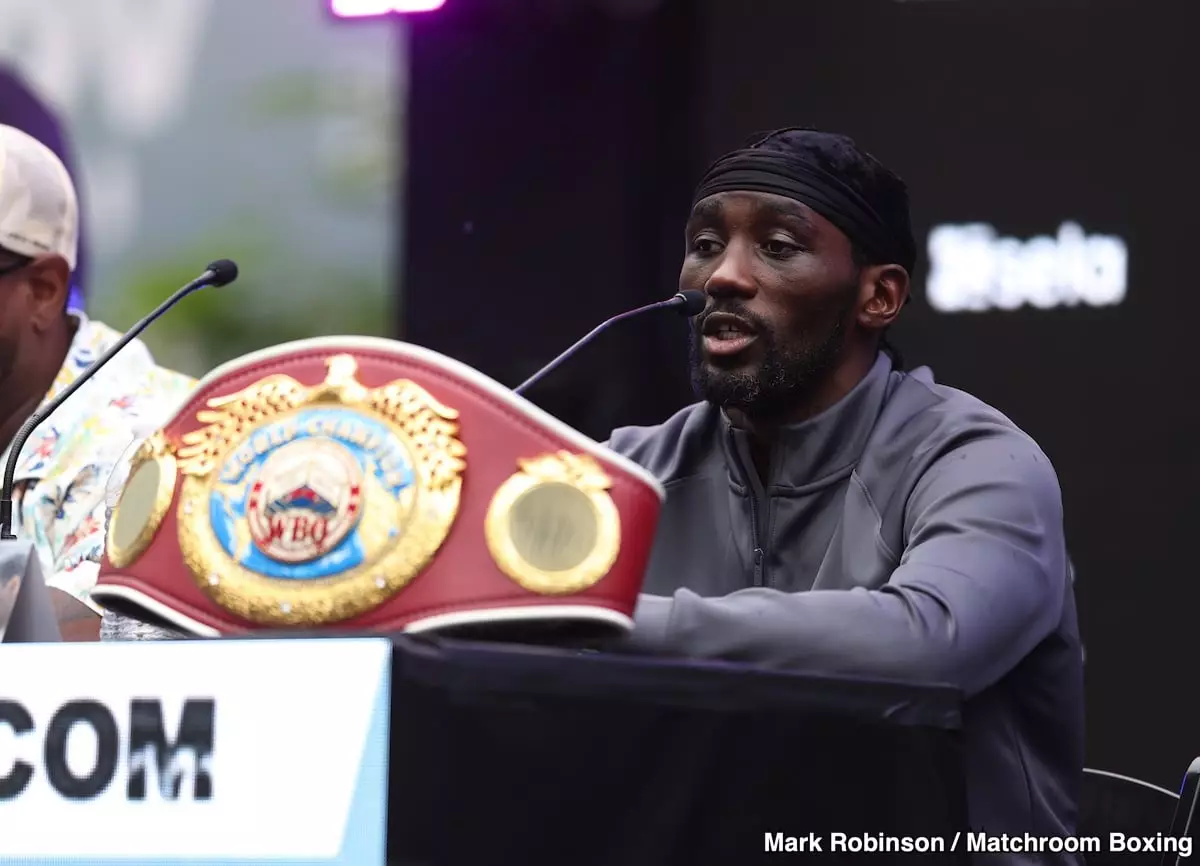The world of professional boxing is littered with competing narratives, especially when it comes to a fighter’s legacy and the caliber of opponents they face. Recently, Terence Crawford found himself at the center of controversy following comments made by fellow superstar Canelo Alvarez, who asserted that Crawford’s career momentum can be attributed to facing only one truly elite opponent, Errol Spence. This critique has ignited a discussion around the validity of a boxer’s legacy in relation to the quality of opposition faced over the course of their career.
Crawford, boasting an impressive professional record of 41-0 with 31 knockouts, responded to Alvarez’s remarks with frustration, asserting that he has transformed “good” fighters into “nobodies” throughout his career. However, the crux of Alvarez’s argument raises a critical issue: has Crawford consistently faced top-tier talent? While Crawford undeniably possesses exceptional talent and skill, his resume has been scrutinized for featuring a lack of formidable opponents aside from a damaged version of Spence. This invites a broader examination of the current athletic landscape where promotional maneuvering can significantly impact a fighter’s trajectory and legacy.
Alvarez’s comment is reflective of a sentiment that has become increasingly prevalent in boxing discourse — that a fighter’s merit should not just be defined by their undefeated record, but by the caliber of challenges they have successfully navigated. The essence of a champion is often measured not just in victories, but in the willingness to confront and conquer the best within their weight class. While Crawford’s ability to dominate in the ring is notable, it begs the question: can he be regarded as among the elite in boxing history when his list of defeats is so short solely due to the quality of fighters he has faced?
The Case of the One-Win Wonder
Alvarez further emphasized Crawford’s singular big win by pointing out that other renowned fighters have proudly faced numerous elite opponents, thus flourishing in a more rigorous environment. This brings us to the term “One Win Wonder,” a label often bestowed upon fighters who display immense talent yet lack the opposition necessary to truly validate their abilities in the eyes of critics. Crawford’s career raises concerns about his willingness to step out of his comfort zone and battle others who are considered elite in the heavyweight and super welterweight classes.
While factors such as promotion, matchmaking, and timing play significant roles in a boxer’s career, the questions persist. Crawford has indeed made calculated choices, often opting for safer matches designed to preserve his undefeated status rather than reaching for higher-stakes encounters that could solidify his legacy. The vitality of competition within the sport cannot be overstated, and by avoiding confrontations with promising prospects such as Jaron Ennis or established names like Vergil Ortiz Jr., Crawford risks being pigeonholed in a debate regarding the authenticity of his greatness.
To silence detractors and cement his legacy, Crawford could consider moving up in weight class, targeting battles against powerful contenders like David Benavidez or David Morrell. By actively seeking these challenging opportunities, he could not only earn the respect of critics but also position himself for lucrative showdowns against elite fighters like Canelo Alvarez. Elevating the competitive bar is key, for even with a robust resume, without high-stakes battles, the perception of a fighter’s legacy remains susceptible to scrutiny.
While Terence Crawford’s immense talent and capabilities are unquestionable, the criticism from Canelo Alvarez serves as a potent reminder of the importance of competition in historic boxing careers. Crawford stands at a crossroads, where his next moves could either redefine his standing in the sport or confirm the narratives crafted by his critics. The boxing world is eager to see whether he accepts these challenges — for it’s in the ring against elite opposition where legacies are truly forged.


Leave a Reply